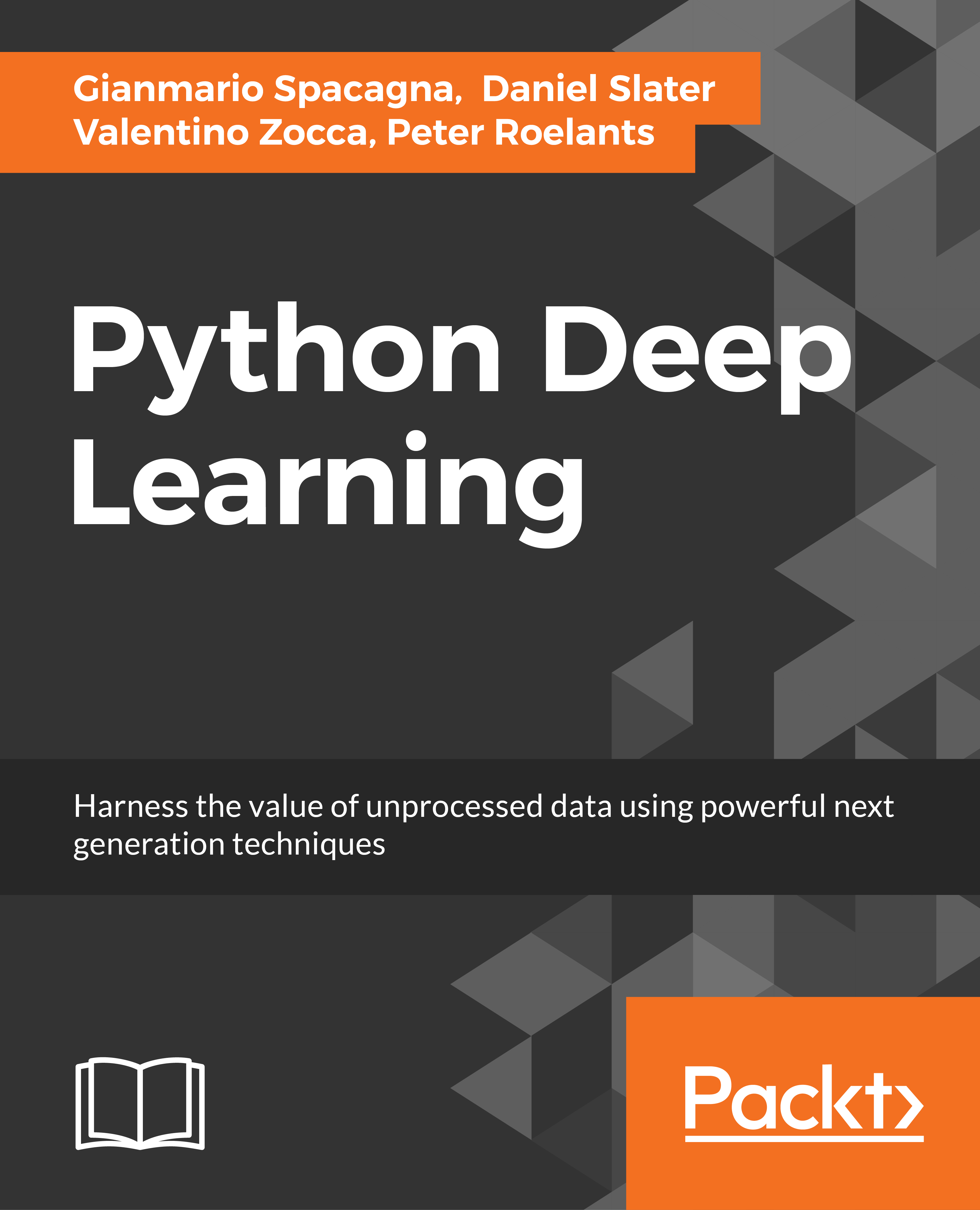-
Book Overview & Buying

-
Table Of Contents

Python Deep Learning
By :

Python Deep Learning
By:
Overview of this book
 Free Chapter
Free Chapter
 Sign In
Start Free Trial
Sign In
Start Free Trial


 Free Chapter
Free Chapter
Vision is arguably the most important human sense. We rely on our vision to recognize our food, to run away from danger, to recognize our friends and family, and to find our way in familiar surroundings. We rely on our vision, in fact, to read this book and to recognize each and every letter and symbol printed in it. However, image recognition has (and in many ways still is) for the longest time been one of the most difficult problems in computer science. It is very hard to teach a computer programmatically how to recognize different objects, because it is difficult to explain to a machine what features make up a specified object. In deep learning, however, as we have seen, the neural network learns by itself, that is, it learns what features make up each object, and it is therefore well suited for a task such as image recognition.
In this chapter we will cover the following topics:
